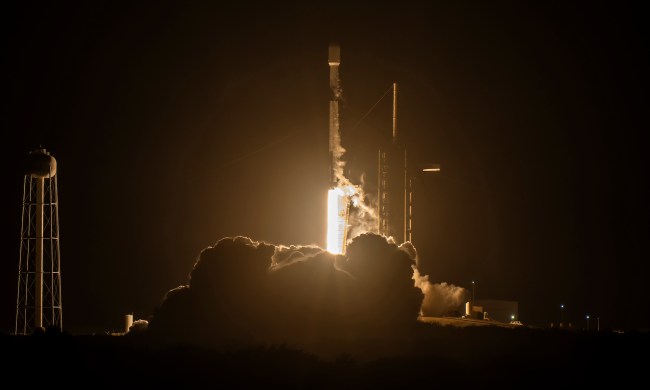SpaceX successfully launched the COSMO-SkyMed Second Generation 2 satellite for the Italian Space Agency on Monday, January 31.
The launch followed three postponements in the past week, including one on Sunday when the countdown was halted just 33 seconds before liftoff due to a cruise ship straying into the hazard zone beneath the rocket’s planned flight path.
SpaceX’s Falcon 9 rocket lifted off from Cape Canaveral in Florida at 6:11 p.m. ET, blasting into the night sky as it carried the Italian Earth-observation satellite to a sun-synchronous orbit.
As usual, the private space company livestreamed the launch on YouTube, capturing the early stages of the mission using a variety of cameras.
Particularly cool was the footage of the stage separation two-and-a-half minutes after launch. While SpaceX usually livestreams this part via a camera attached to the Falcon 9’s upper stage, this time it captured the separation using a powerful ground camera. You can see the footage below.
Mission highlights
Below are the key moments from Monday night’s launch.
The mission marked the third ride to space for the Falcon 9 first stage following two launches in 2019.
Liftoff! pic.twitter.com/aJG87rLr0U
— SpaceX (@SpaceX) January 31, 2022
About 150 seconds after launch, a ground camera captured the moment the two rocket sections separated while traveling at about 3,665 mph (5,900 kph), 42.7 miles (68.7 km) above Earth.
Just shy of four minutes into the mission, the rocket’s fairing fell away to expose the satellite to space for the first time. Ships in the Atlantic were set to attempt to catch the two fairing halves in giant nets so they can be used again. We’re waiting for confirmation on whether the fairing sections were successfully caught.
The first stage of the Falcon 9 rocket was then captured making another perfect landing, this one at Landing Zone 1 at Cape Canaveral. Again, some new camera angles caught the rocket’s final moments before touching down around eight minutes after launch.
Watching from terra firma, SpaceX boss Elon Musk took a moment to remind everyone of the Falcon 9 rocket’s remarkable capabilities.
16 story tall rocket, traveling several times faster than a bullet, backflips & fires engines to return to launch site
— Elon Musk (@elonmusk) January 31, 2022
Later, SpaceX confirmed the successful deployment of the Italian satellite.
Another mission accomplished!


